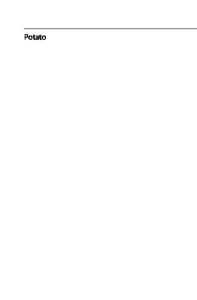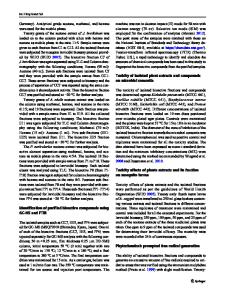Bioactive Compounds of Allium Species
Evaluation of different plant species of Allium has resulted in identification of several bioactive constituents/phytochemicals. Some of the bioactive phytochemical constituents include organosulfur compounds, thiosulfinates, polysulfanes, polyphenols, ta
- PDF / 384,150 Bytes
- 20 Pages / 439.37 x 666.142 pts Page_size
- 30 Downloads / 341 Views
Contents 1 Introduction . . . . . . . . . . . . . . . . . . . . . . . . . . . . . . . . . . . . . . . . . . . . . . . . . . . . . . . . . . . . . . . . . . . . . . . . . . . . . . . . . . . 2 2 Botanical Distribution and Bioactive Compounds . . . . . . . . . . . . . . . . . . . . . . . . . . . . . . . . . . . . . . . . . . . 2 3 Bioactivity . . . . . . . . . . . . . . . . . . . . . . . . . . . . . . . . . . . . . . . . . . . . . . . . . . . . . . . . . . . . . . . . . . . . . . . . . . . . . . . . . . . . . 5 3.1 Antioxidant Activity . . . . . . . . . . . . . . . . . . . . . . . . . . . . . . . . . . . . . . . . . . . . . . . . . . . . . . . . . . . . . . . . . . . . 5 3.2 Anticancer Activity . . . . . . . . . . . . . . . . . . . . . . . . . . . . . . . . . . . . . . . . . . . . . . . . . . . . . . . . . . . . . . . . . . . . . 7 3.3 Antimicrobial Activity . . . . . . . . . . . . . . . . . . . . . . . . . . . . . . . . . . . . . . . . . . . . . . . . . . . . . . . . . . . . . . . . . . 8 3.4 Antihyperlipidemic/Anti-hypercholesterolemic Activity . . . . . . . . . . . . . . . . . . . . . . . . . . . . . . 9 3.5 Other Bioactivities . . . . . . . . . . . . . . . . . . . . . . . . . . . . . . . . . . . . . . . . . . . . . . . . . . . . . . . . . . . . . . . . . . . . . . 9 4 Toxicity . . . . . . . . . . . . . . . . . . . . . . . . . . . . . . . . . . . . . . . . . . . . . . . . . . . . . . . . . . . . . . . . . . . . . . . . . . . . . . . . . . . . . . . . 10 5 Conclusions . . . . . . . . . . . . . . . . . . . . . . . . . . . . . . . . . . . . . . . . . . . . . . . . . . . . . . . . . . . . . . . . . . . . . . . . . . . . . . . . . . . 11 References . . . . . . . . . . . . . . . . . . . . . . . . . . . . . . . . . . . . . . . . . . . . . . . . . . . . . . . . . . . . . . . . . . . . . . . . . . . . . . . . . . . . . . . . 12
Abstract
Evaluation of different plant species of Allium has resulted in identification of several bioactive constituents/phytochemicals. Some of the bioactive phytochemical constituents include organosulfur compounds, thiosulfinates, polysulfanes, polyphenols, tannins, flavonoids, alkaloids, saponins, fructans, fructo-oligosaccharides, essential oils, amino acids, vitamins, pigments, and much more. Traditionally, majority of the plants belonging to Allium sp. have been proved to be effective in treating flu, cold, cough, asthma, headache, stomachache, arthritis, and other common ailments. Besides, bioactive compounds identified in some of the commonly used Allium sp. plants are scientifically proven to contribute towards a wide range of bioactivities such as antioxidant, antimicrobial, anti-inflammatory, antidiabetic, anticancer, antihypercholesterolemic activities and much more. In the present chapter, attempts R. Bhat (*) ERA-Chair for Food (By-) Products Valorisation Technologies (VALORTECH), Estonian University of Life Sciences, Tartu, Estonia e-mail: [email protected]; [email protected] © Springer Nature Switzerland AG 2020 H. N. Murthy, K. Y. Paek (eds.), Bioactive Compounds in Underutiliz
Data Loading...











